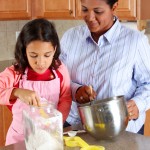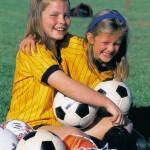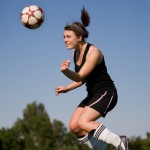 Looking for an activity to do with the kids this summer? Introduce them to cooking! Here’s an easy kid-friendly recipe to get you started:
Looking for an activity to do with the kids this summer? Introduce them to cooking! Here’s an easy kid-friendly recipe to get you started:
Healthy Rice Crispy Balls
Ingredients:
2 cups all natural puffed rice cereal
2/3 cup brown rice syrup
1/2 cup unsweetened all natural peanut butter, nut butter or sunflower seed butter
2/3 cup pepitas
Directions:
Melt peanut butter and brown rice syrup in a pot on the stove- do not boil. In a bowl mix puffed rice and pepitas. Pour hot syrup over top and mix in. Form into balls and store in the fridge
Recipe by Shirley Plant- Nutrition Coach and Author of Finally Food I Can Eat
www.deliciousalternatives.com. Follow her on Twitter via @sherrecipes
 Subscribe
Subscribe







